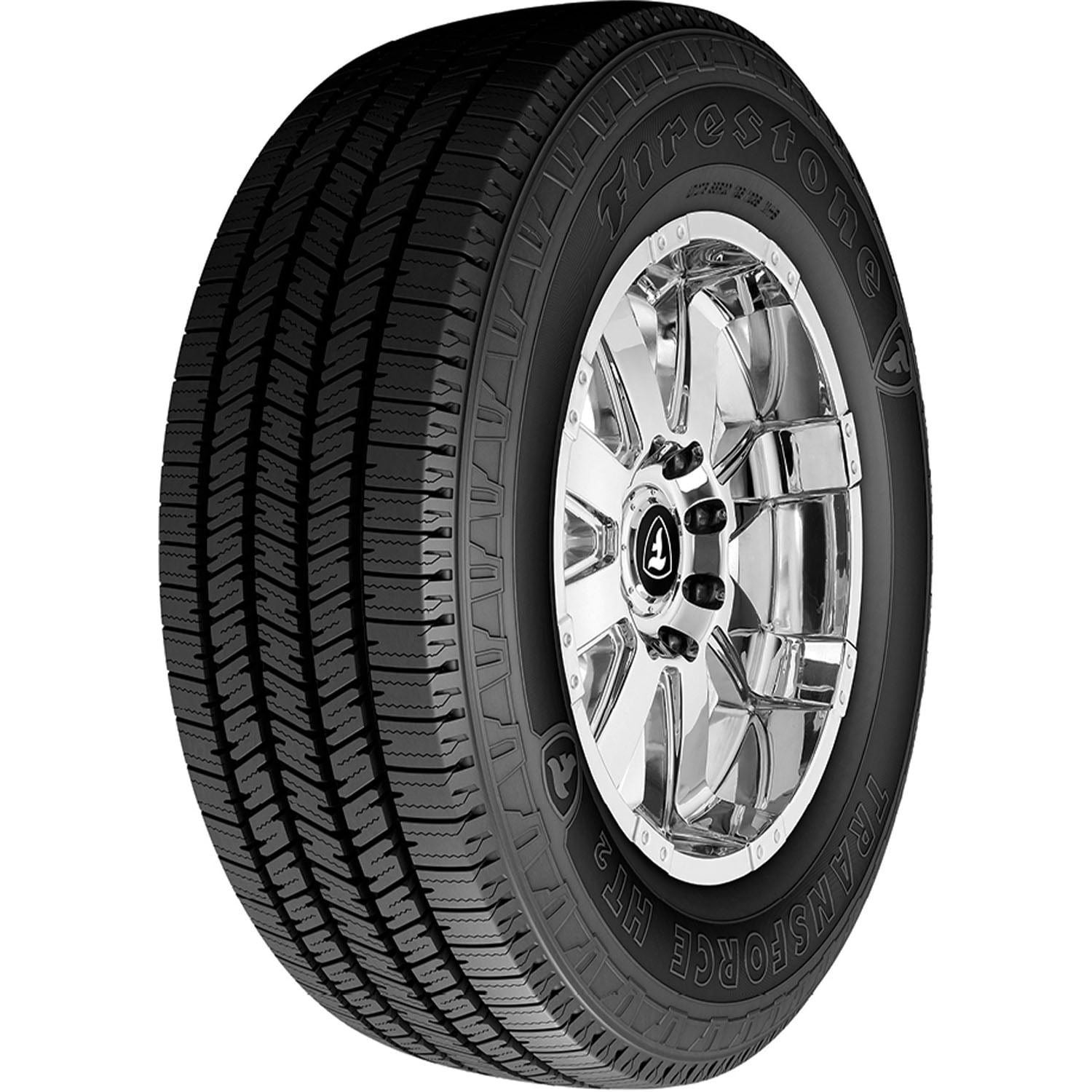

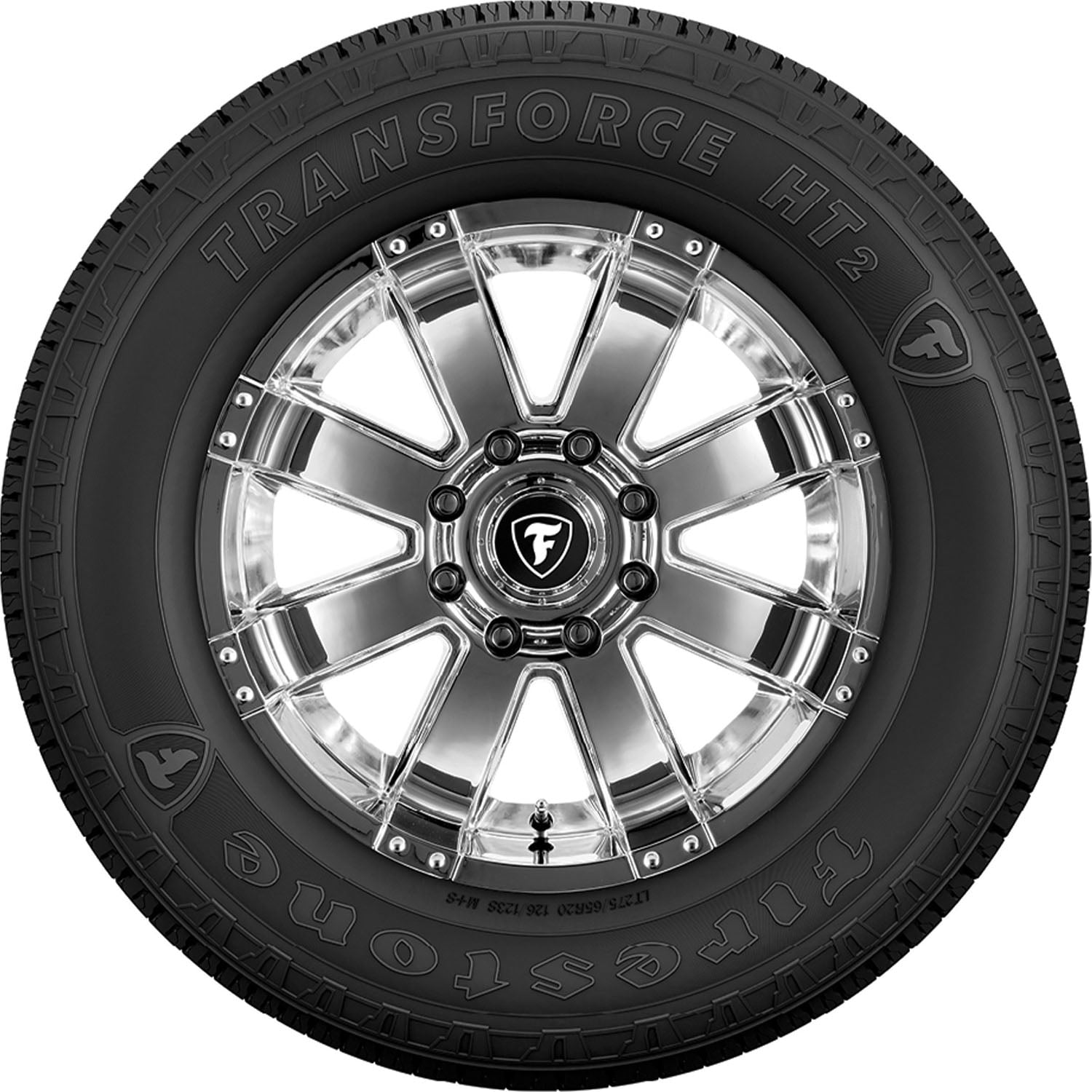
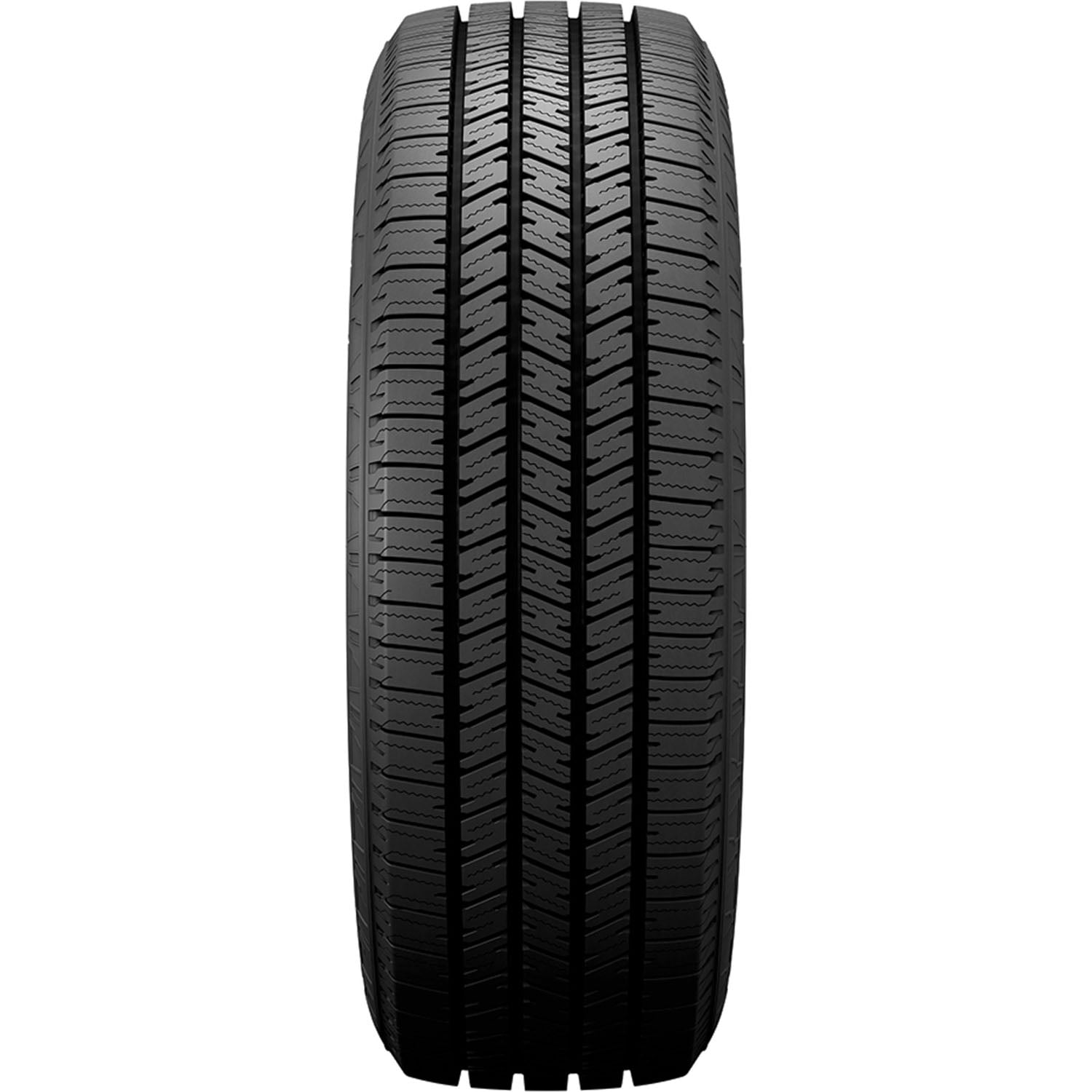

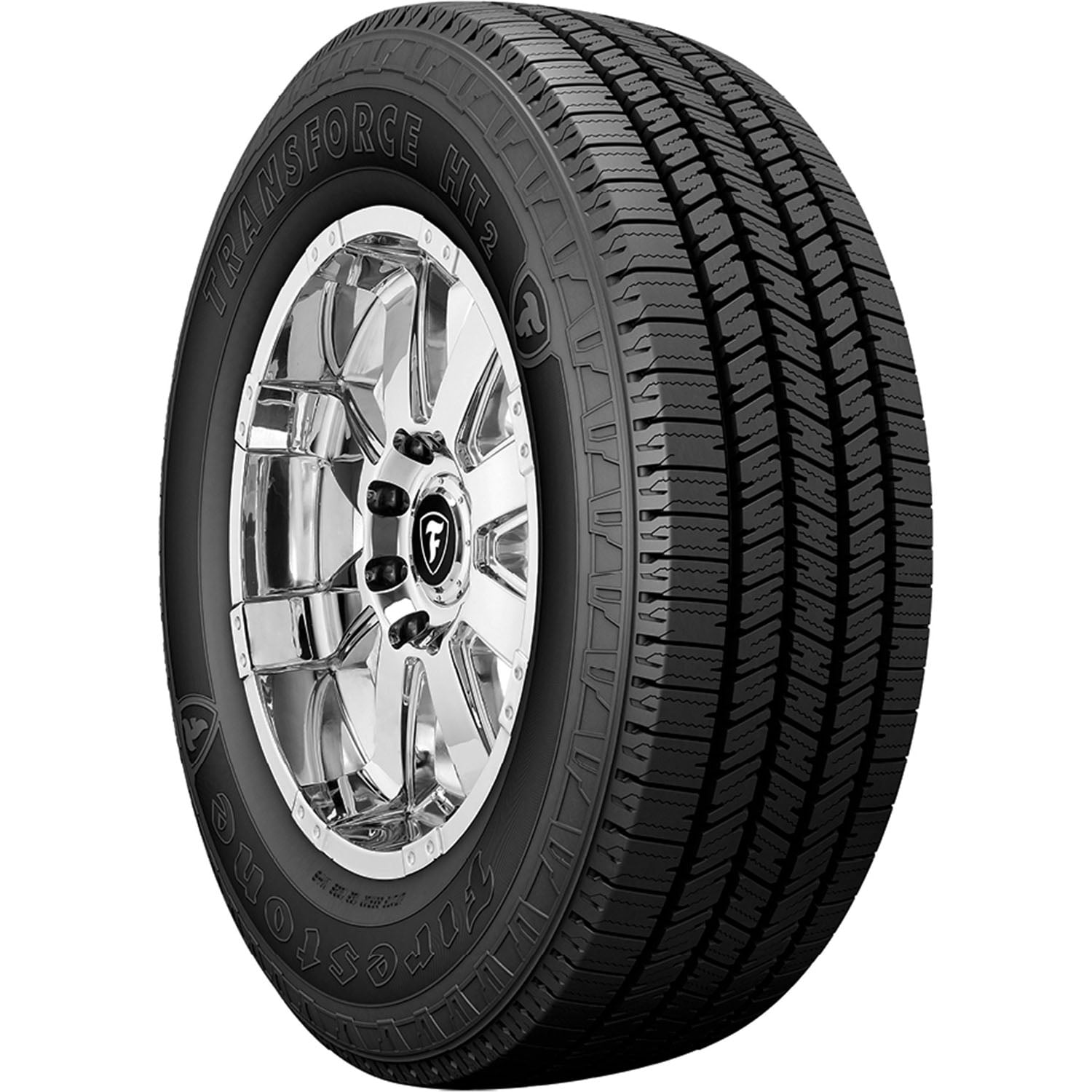
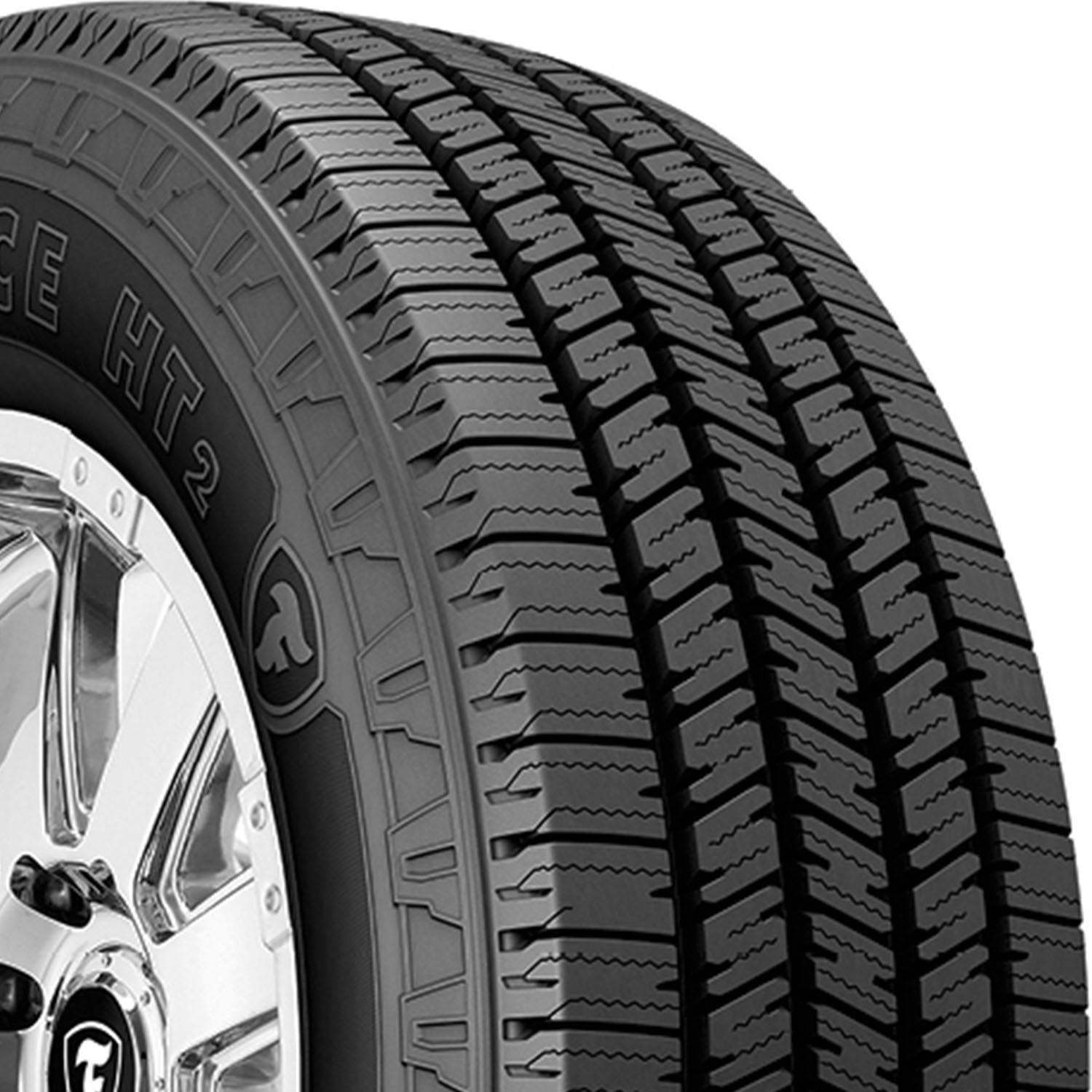
The Firestone Firestone tire resists cracks, punctures, and chipping thanks to super durable advanced rubber compounds.Firestone Transforce HT2 is a commercial all-season highway tire designed for light pickup trucks, SUVs and class B or C motorhomes. The Optimized Tire Profile helps to resist uneven wear, even when carrying heavy loads. Full Depth Lateral Slots help to reduce the risk of hydroplaning, while circumferential grooves offer effective water evacuation. Equipped with Saw Tooth Edge Siping, Transforce HT2 provides biting edges for a better grip on snowy roads and maintain block stiffness. Features: Describes the sidewall appearance. Examples: BSW= Black Side Wall, WSW = White Side Wall OWL = Outlined White Letters. The load index (LI) is a 2 or 3 digit number that correlates to the maximum amount of weight the tire can carry. For example, a tire with a load index of 87 indicates that the tire can carry a maximum load of 1,201 lbs. In the case of our example the 87 identifies the tires ability to carry a maximum of 1,201 lbs. So 4 tires will carry a maximum of 4,804 lbs. Refer to your vehicle owner's manual for the recommended minimum Load Index. It is not recommended to install tires with a lower Load Index. By doing so, this could cause your tires to be overloaded thus potentially causing a blowout. Speed Ratings (SR) are based on laboratory tests and indicates the maximum speed the tire can achieve. These tests are based on limited time trials. Higher speed rating tires typically will yield better handling capabilities, but may often result in lower mileage. Refer to your vehicle owner's manual for the recommended minimum Speed Rating. It is not recommended to install a tire with a lower speed rating as it could affect the handling of your vehicle. It is important to note that speed ratings only apply to tires that have not been damaged, altered, under-inflated or overloaded. Additionally, most tire manufacturers maintain that a tire that has been cut or punctured no longer retains the tire manufacturer's original speed rating, even after being repaired because the tire manufacturer can't control the quality of the repair. Ply Rating is related to the max load capacity. This value can be defined with a letter or number. The higher the number/letter, the higher the load capacity. To help consumers evaluate their tires, the U.S. National Highway Traffic Safety Administration (NHTSA) created the Uniform Tire Quality Grading System (UTQG). The UTQG rates tires are rated on their tread-wear, traction performance, and temperature resistance. The grade for each of these can be found on the sidewall of your tire (except for winter tires and certain light truck tires). Click here for more information. The maximum load this tire will support. Remember to multiply this number by the number of tires installed on your vehicle to get the maximum carrying capacity. This number is directly related to the Load Index. The maximum air pressure this tire will support. This does not represent the amount of air pressure your tires should have at all times. Consult with your owner's manual to determine the best air pressure you should use for your vehicle. The amount of tread on the tire. Once the tire is worn to 2/32nds, it is considered fully used and should be replaced at that time. Most tires will have tire indicators in the grooves of the tire to help you determine when the tires are worn down to 2/32nds. Nondirectional - most common, same tread pattern on inside & outside of the tire. Can be rotated to all four corners of vehicle. Asymmetrical - tread pattern is different on the inside to the outside of the tire, and must be mounted properly. Can be rotated to all four corners of the vehicle. Directional tires - roll in only one direction, must be mounted properly. Once mounted they must remain on the same side of the vehicle, and only be rotated front to rear.
Trustpilot
4 days ago
2 weeks ago